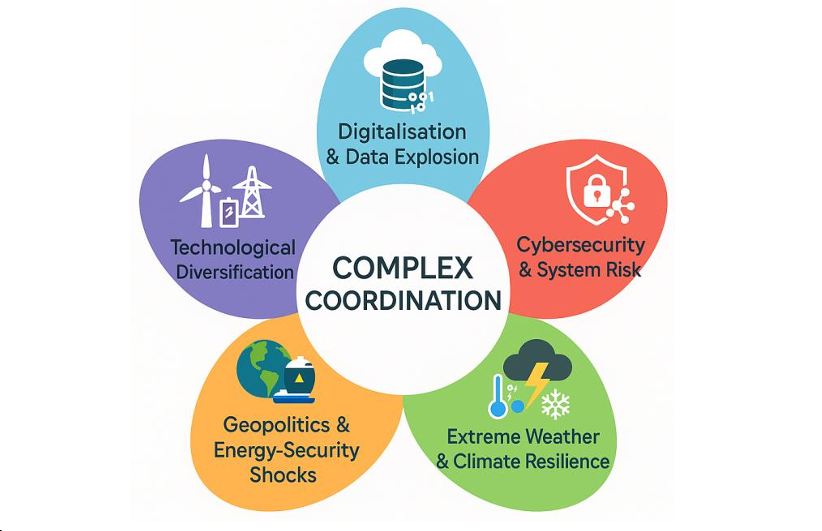For much of the twentieth century, energy systems operated under vertically integrated utilities that planned, dispatched, and balanced power and gas flows under a single hierarchy.
Liberalization in the 1990s dismantled these structures, replacing internal engineering coordination with fragmented interactions across generators, grid operators, retailers, and aggregators. Today, decarbonization multiplies the challenge, adding new vectors—hydrogen, district heating, and electrified transport—that must synchronize with an already stressed electricity system.
The Oxford Institute for Energy Studies argues in its September 2025 paper that the binding constraint of the energy transition is no longer technology cost but coordination under complexity. The analysis highlights how information asymmetries, incompatible incentives, and mismatched regulatory clocks now undermine efficiency across both horizontal (peer-to-peer) and vertical (transmission-to-distribution) relationships.
In Great Britain and Europe, liberalization replaced planning with markets, assuming that price signals could encode system needs. That logic falters under net-zero mandates. Wind and solar variability imposes real-time balancing challenges; electrification of heat, transport, and hydrogen adds elastic, high-impact loads deep into distribution networks; and sector coupling blurs boundaries between power, gas, and heat. The result is a system where decisions once managed internally now require minute-by-minute orchestration across thousands of actors.
New Stressors: Digitalization, Cybersecurity, Climate Shocks, Geopolitics
Beyond net-zero, at least five additional forces magnify coordination risk. Digitalization floods operators with terabytes of data from smart meters and sensors, demanding standardized formats and APIs simply to maintain observability. Cyberattacks, which hit 67% of surveyed energy-sector IT leaders in 2024, transform coordination into a collective cybersecurity obligation. Climate extremes such as the 2021 Texas freeze and the 2025 European heatwave demonstrate how failures cascade across vectors, turning resilience into a multi-network task. Geopolitical shocks, from Russian gas cut-offs to Red Sea shipping disruptions, force cross-border alignment on gas, LNG, and hydrogen scheduling. Finally, technological diversification—HVDC hubs, offshore “energy islands,” hydrogen backbones—creates assets whose operation requires multi-jurisdictional coordination well beyond traditional market zones.
Failures often stem from information gaps, divergent incentives, and timing mismatches. Transmission operators may overestimate distribution headroom; gas, power, and local flexibility markets clear on incompatible clocks; and tariffs impose multiple mark-ups on cross-vector flows, discouraging efficient electrification. Even when incentives align, coordination falters without shared data models, common cybersecurity baselines, or interoperable standards.
Toward Hybrid Governance
The OIES study concludes that neither markets nor hierarchy alone can solve the coordination problem. Pure markets cannot internalize carbon budgets, manage monopoly networks, or price systemic risk. Pure hierarchies suffer epistemic limits: local information and innovation often reside at the edge, among distributed resources. The emerging solution is a “hierarchy-anchored hybrid.” In this model, an authoritative focal institution—such as Great Britain’s National Energy System Operator—sets binding guardrails on carbon, cybersecurity, and reliability, while markets and network platforms handle discovery, innovation, and decentralised optimisation within those bounds.
Stay updated on the latest in energy! Follow us on LinkedIn, Facebook, and X for real-time news and insights. Don’t miss out on exclusive interviews and webinars—subscribe to our YouTube channel today! Join our community and be part of the conversation shaping the future of energy.
